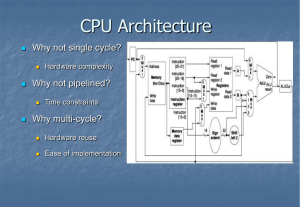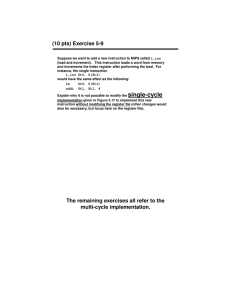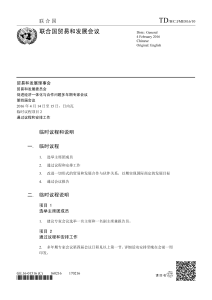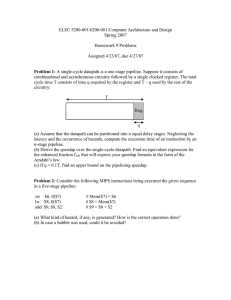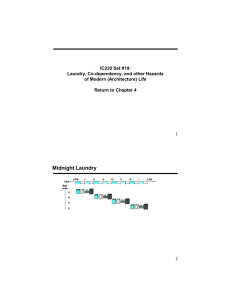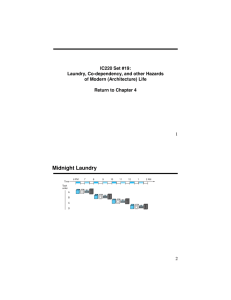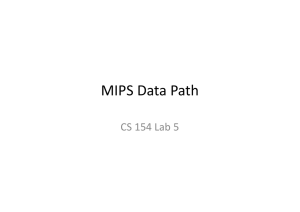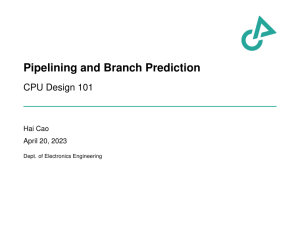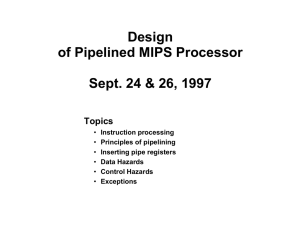Pipelined MIPS
advertisement
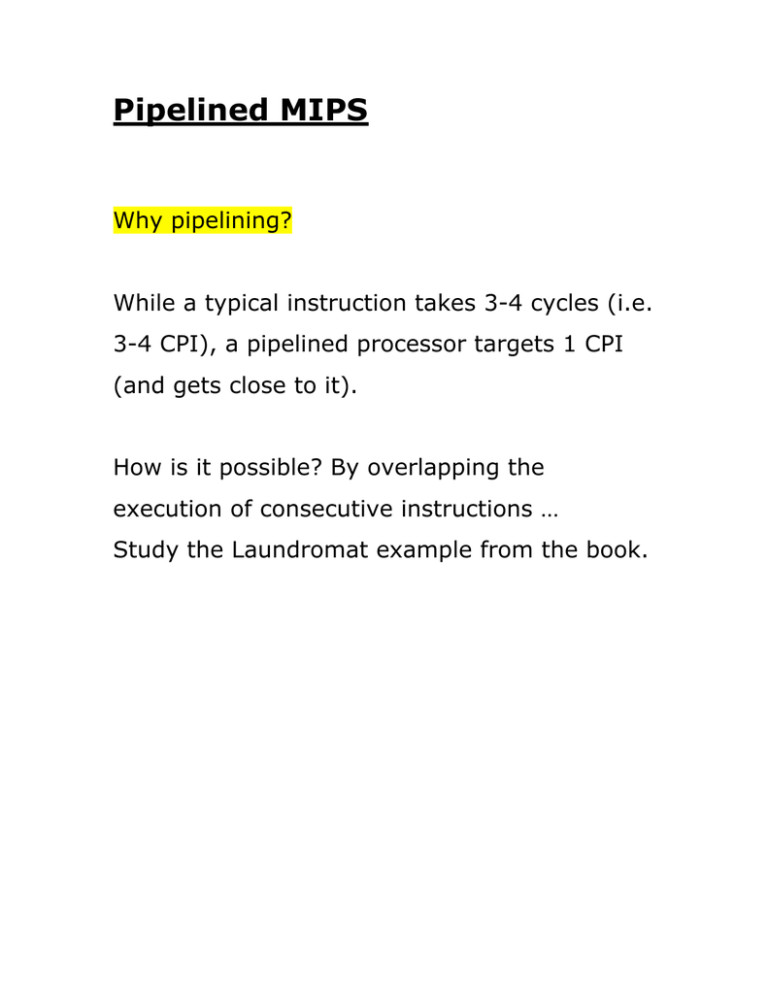
Pipelined MIPS Why pipelining? While a typical instruction takes 3-4 cycles (i.e. 3-4 CPI), a pipelined processor targets 1 CPI (and gets close to it). How is it possible? By overlapping the execution of consecutive instructions … Study the Laundromat example from the book. Example of pipelining Pipelining in a laundry Washer takes 30 minutes Dryer takes 40 minutes Folding takes 20 minutes It shows the rough division of responsibilities. The buffers between stages are not shown. Since multiple memory operations overlap, we had to return to Harvard architecture! How can the same adder perform IF and EX in cycle 3? We need an extra adder! Gradually we need to modify the data path for the multicycle implementation. Uniformity is simplicity Speedup The steady state throughput is determined by the time t needed by one stage. The length of the pipeline determines the pipeline filling time If there are k stages, and each stage takes t time units, then the time needed to execute N instructions is k.t + (N-1).t Estimate the speedup when N=5000 and k=5 Hazards in a pipeline Hazards refer to conflicts in the execution of a pipeline. On example is the need for the same resource (like the same adder) in two concurrent actions. This is called structural hazard. To avoid it, we have to replicate resources. Here is another example: lw $s1, 4($sp) add $s0, $s1, $s2 IF ID EX MEM WB IF ID EX MEM WB Notice the second instruction tries to read $s1 before the first instruction complete the load! This is known as data hazard. Avoiding data hazards One solution is in insert bubbles (means delaying certain operation in the pipeline) lw $s1, 4($sp) add $s0, $s1, $s2 IF ID EX MEM WB IF nop nop nop ID Another solution may require some modification in the datapath, which will raise the hardware cost Hazards slow down the instruction execution speed. Control hazard sub $s1, $t1, $t2 beq $s1, $zero L some instruction here IF ID EX MEM WB IF ID IF EX ID MEM EX Will the correct instruction be fetched? There is no guarantee! The next instruction has to wait until the predicate ($s1=0) is resolved. Look at the tasks performed in the five steps – the predicate is evaluated in the EX step. Until then, the control unit will insert nop (also called bubbles) in the pipeline. The Five Cycles of MIPS (Instruction Fetch) IR:= Memory[PC]; PC:= PC+4 (Instruction decode and Register fetch) A:= Reg[IR[25:21]], B:=Reg[IR[20:16]] ALUout := PC + sign-extend(IR[15:0]] (Execute|Memory address|Branch completion) Memory refer: ALUout:= A+ IR[15:0] R-type (ALU): ALUout:= A op B Branch: if A=B then PC:= ALUout (Memory access | R-type completion) LW: MDR:= Memory[ALUout] SW: Memory[ALUout]:= B R-type: Reg[IR[15:11]]:= ALUout (Write back) LW: Reg[[20:16]]:= MDR sub $s1, $t1, $t2 beq $s1, $zero L Some instruction here IF ID EX MEM WB IF ID EX MEM IF o IF ID No action performed here An alternative approach to deal with this is for the compiler (or the assembler) to insert NOP instructions, or reorder the instructions.
